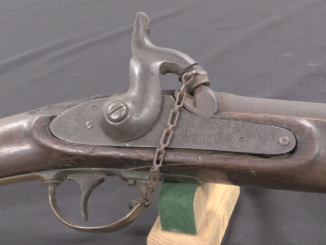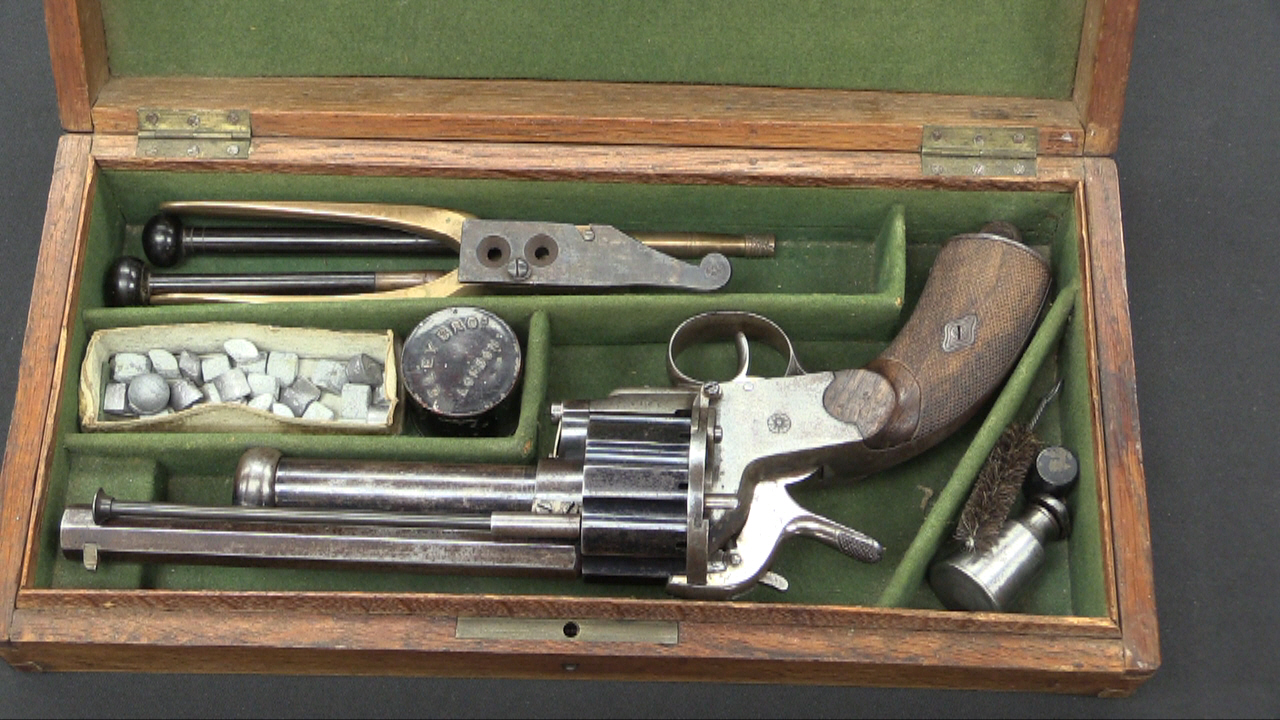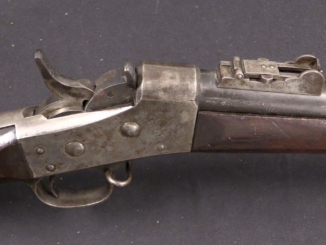Carbines made by the Columbus Armory are particularly scarce, and their history is not really well understood. They were manufactured by John Gray of Columbus SC, whose brother William Gray was a partner in another (better documented) Georgia arms factory under the director of J.P. Murray. John Gray appear to have started producing guns with a contract for Alabama, most likely with the help of his brother’s company – the Murray arms are extremely similar to the Columbus Armory guns. Gray had a contract for 200 rifles and 1000 carbines, of which only 176-183 guns are documented as having been delivered (records show 176 guns delivered, but Gray was paid for 183).
Note the PRO / FCH stamp on the barrel; the is the inspection mark of Captain Humphries, commander of the CSA arsenal in Columbus. Mechanically, this is a Mississippi-style carbine with a .54 caliber 23 1/2” barrel with 3-groove rifling.




I doubt anyone was eager to shoot a carbine during a wild ride. How would you reload during a chase? I merely jest, however, as riders wouldn’t load guns on horseback at the time. I could be wrong.
The impracticality of single-shot muzzleloading firearms on horseback was the main reason that cavalry clung to the saber, the arme blanche, as long as they did.
It’s also the reason that dragoons rode into battle, then dismounted and fought as light infantry, usually as skirmishers. As H. Beam Piper pointed out (in Lord Kalvan of Otherwhen), they could get into position faster than foot infantry, and could wear heavier armor (when infantry still used it) without exhausting themselves on the march.
Most senior officers in the British Army during the early to mid 19th century considered three things to be nearly worthless in battle. Those being the smoothbore cavalry musketoon, the single-shot smoothbore cavalry pistol, and the bayonet generally. They had seen all three fail miserably in the Napoleonic campaigns, where artillery and infantry rate of fire ruled the battlefield. Please note that that was still with smoothbore muskets and flintlock ignition. The percussion rifle-musket just made things worse from the target’s POV.
And yes, Wellington really did say that “the purpose of cavalry on the battlefield is to lend tone to what would otherwise be merely an unseemly brawl”. The ineffectiveness of cavalry weapons overall was why he said it.
The real solution for cavalry was of course the revolver and the rifled, breechloading carbine, single-shot or better yet repeater. And even then, other than in a charge at the gallop, they were considerably more useful when fighting on foot, as Buford’s cavalry did during their staged retreat through the town on the first day of Gettysburg. Yes, they took serious casualties, but the Confederates were mauled in the process.
As for that “charge at the gallop”, see p.6 and pp. 76-77 of Arms and Equipment of the Civil War by Jack Coggins. About the only thing potentially more disastrous for cavalry than charging a battery of 12-pounder Napoleons as per the manual was trying the same stunt in front of an infantry rifle company (100 men).
As for infantry trying it on either one, that was mostly a rather gruesome way to commit suicide.
Hint; 1 company of infantry, firing at cavalry in the charge beginning at 600 yards (volley fire, 3 rds/min)- 700 rounds in 2 min 6 sec.
The same company, firing at infantry in the charge, also beginning volley fire at 600 yards- 2,100 rounds in 7 min 3 sec.
Just. One. Company.
Doing it that way, the accuracy or otherwise of each individual soldier really doesn’t matter. Throw enough lead and somebody’s bound to stop a packet.
Now you know why the casualty total for the three days of Gettysburg almost exactly equaled that of U.S. forces for the entire Vietnam War.
cheers
eon